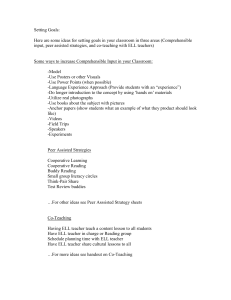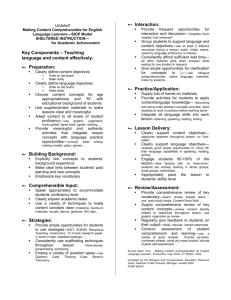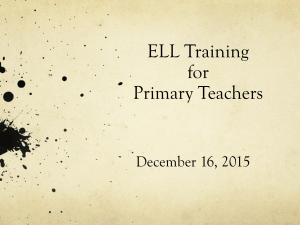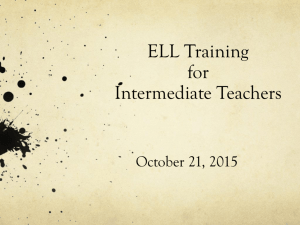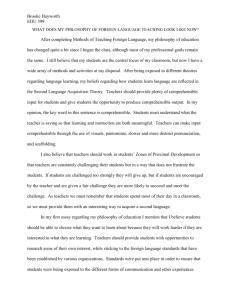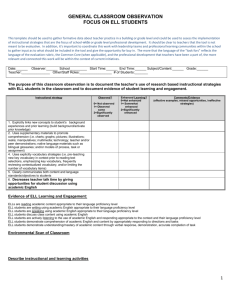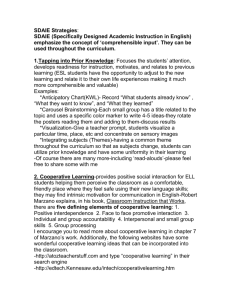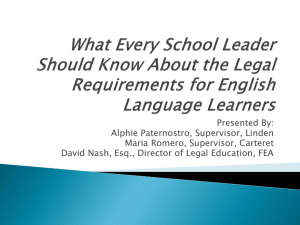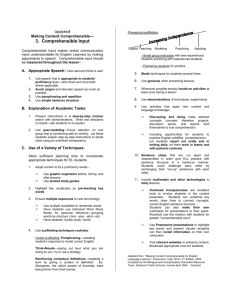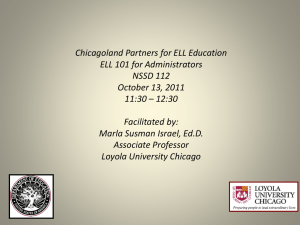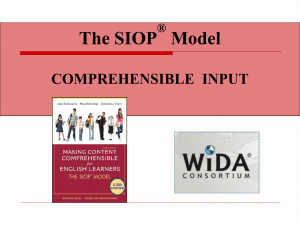Chapter 3-Connecting Content & Language
advertisement
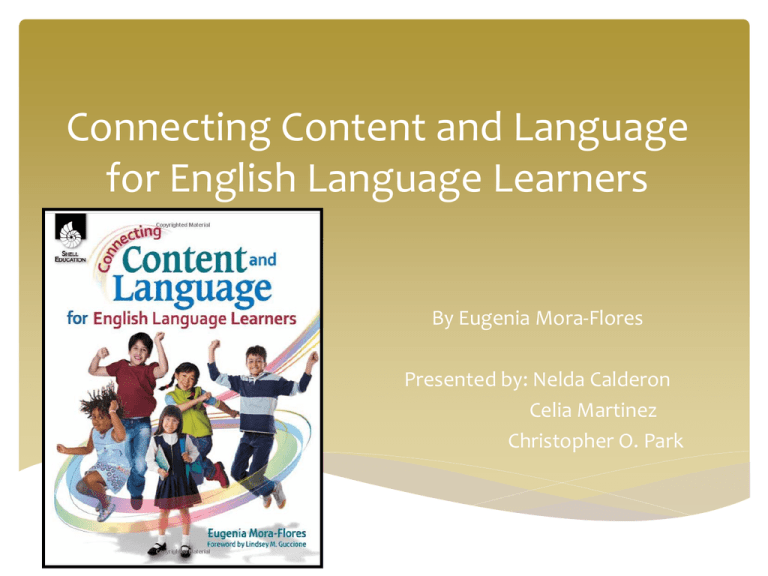
Connecting Content and Language for English Language Learners By Eugenia Mora-Flores Presented by: Nelda Calderon Celia Martinez Christopher O. Park Chapter 3 Academic Language “Language shapes the way we think, and determines what we can think about.” Benjamin Lee Whorf Jim Cummins The difference between students’ conversational proficiency and academic language proficiency. Basic Interpersonal Communication Skills (BICS) -Language needed to engage in social conversations. Cognitive Academic Language Proficiency (CALPS) -Understand concrete and abstract language and express their thinking across the curriculum. Vocabulary Involves developing high-frequency vocabulary that students can use across the domains to develop an expressive and receptive vocabulary. Goal is to help students not only understand words, but also make them part of their own personal lexicon. Functions and Forms of Language The purpose for using language is a language function. Students need opportunities to use language for a variety of purposes. ELD instruction involves explicit teacher modeling of selected language functions and opportunities for students to practice functions of language. Functions of language are directly connected to language forms. Academic Language Development Students encounter language challenges daily. Content instruction should provide rich opportunities for ELL’s to make connections and draw upon personal experiences to support their learning. Instruction should be applicable and exciting. Language Input Being able to understand the language to access content. (Language Input) Being able to express their thinking orally and in writing. (Language output) Content needs to be brought to life for ELL’s. Krashen noted that ELL’s need comprehensible input for language acquisition to occur. Specially Designed Academic Instruction in English Support teachers in their efforts to make contentarea instruction comprehensible for ELL’s. Teachers might find it difficult to teach if they do not have the content vocabulary or prior knowledge to make meaning. Anticipation Guides Generate prior knowledge, set a purpose for reading, and build curiosity. Series of statements that relate to theme, concept, or big idea from a selected reading passage. Inferential statements, asking students to share their opinions on each statement. Agree or disagree and speak with their partner/s. Classroom Connection After completing Anticipation Guide activity students do an extension by narrowing down a particular skill such as vocabulary. For example students compare one character with another in a different story. Carousel Generate prior knowledge or check for understanding. Small groups, peers serve as a scaffold in language and content for one another. Jigsaw Reading strategy that helps students reach deeper levels of comprehension for a small segment of text. Develops interdependence since students are responsible to a larger group. Develops confidence in struggling readers who need the process only a small portion of the text at hand. Multimedia Presentations Generate prior knowledge through varied sources of information or to present one’s learning. Written and visual media. Lack of prior knowledge inhibits reading comprehension, multimedia can provide students with background knowledge, as well as show students different ways in which people share information. Academic Language Output ELD Strategies provide students with an opportunity to develop academic language. Specially Designed Academic Instruction in English (SDAIE) use strategies to help content become comprehensible to students and allows them to make meaning of the information. Integrating strategies can result in making content comprehensible as well as helping students develop academic language. Facilitating Thinking Whether we ask students to engage in critical thinking, creative thinking, convergent thinking, divergent thinking, inductive thinking, or deductive thinking, our role is to guide the thinking process. Classroom Connection Students need to infer, engage in creative thinking, and move beyond the text to generate an answer. Teachers need to be mindful of questioning. Students need to become knowledgeable, critical, creative thinkers if they want to succeed in the 21st century.
